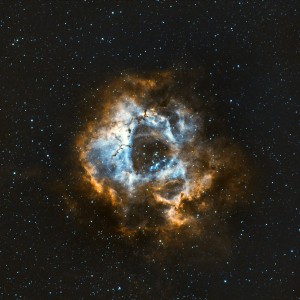At the risk of re-hashing a previous thread, I’m wondering what others’ experience is regarding atmospheric steadiness (or lack thereof) during this Mars apparition. I’ve been out at least a dozen times since mid-July, and I have yet to have what I would call a really steady night. Three or four of those times the images were so bad that I did not even bother to attempt a sketch. The seeing was more or less steady during rest of the sessions, some better than others, but never what I would call rock solid. Sure, there would be brief moments when I could see some really fine detail, but it was always very fleeting. So I’m sure my scope is capable of better images, but the atmosphere just won’t let me.
I’m observing with an 8-inch f/8 Newtonian. It has a fan that blows across the mirror, and out vents in the opposite side of the tube. I always let the fan run a good half hour before I start observing, which typically takes a half hour more. The fan is rheostat controlled, and I turn it down to about half speed while observing. (Star images at high magnification do not elongate so there is no vibration induced by the fan.). So I don’t think that it’s a tube current/boundary layer problem.
I always try to observe when Mars is transiting, to ensure that I’m looking through as little air as possible. But here in SE Michigan (~42 N), Mars is barely reaching 32 degrees altitude now. Not very high. Even at the BFSP (about the same latitude) this past weekend, we saw the same thing. In my back yard, I’m looking between houses, although there are a couple homes on a cul-de-sac a couple hundred yards away in the next block. After that it’s just woods and fields. But every time I have observed, the image always has some motion to it, enough to degrade the detail I can see.
Is anyone else experiencing this? How many of you have had at least one really steady night? Am I expecting too much from my latitude? Should I move to southern Florida before it's too late?
Doug
I’m observing with an 8-inch f/8 Newtonian. It has a fan that blows across the mirror, and out vents in the opposite side of the tube. I always let the fan run a good half hour before I start observing, which typically takes a half hour more. The fan is rheostat controlled, and I turn it down to about half speed while observing. (Star images at high magnification do not elongate so there is no vibration induced by the fan.). So I don’t think that it’s a tube current/boundary layer problem.
I always try to observe when Mars is transiting, to ensure that I’m looking through as little air as possible. But here in SE Michigan (~42 N), Mars is barely reaching 32 degrees altitude now. Not very high. Even at the BFSP (about the same latitude) this past weekend, we saw the same thing. In my back yard, I’m looking between houses, although there are a couple homes on a cul-de-sac a couple hundred yards away in the next block. After that it’s just woods and fields. But every time I have observed, the image always has some motion to it, enough to degrade the detail I can see.
Is anyone else experiencing this? How many of you have had at least one really steady night? Am I expecting too much from my latitude? Should I move to southern Florida before it's too late?
Doug



